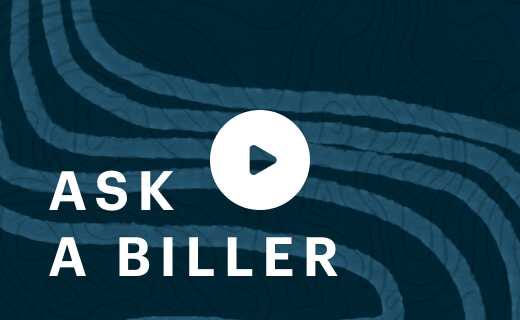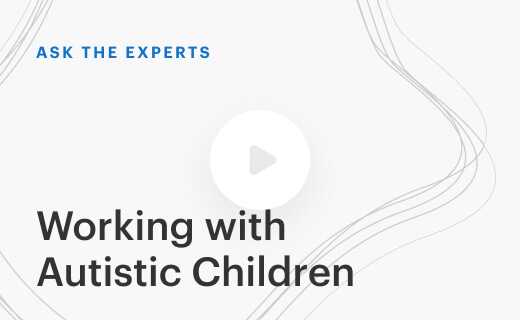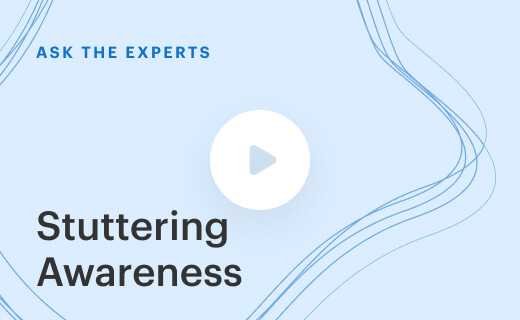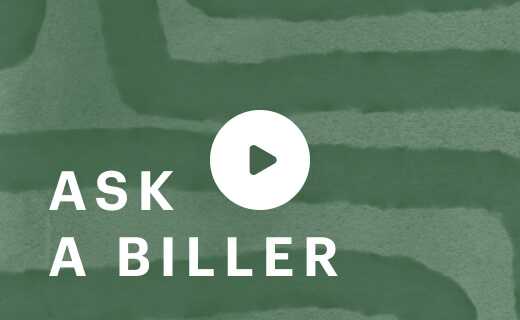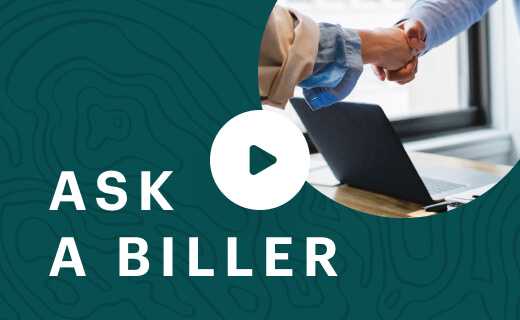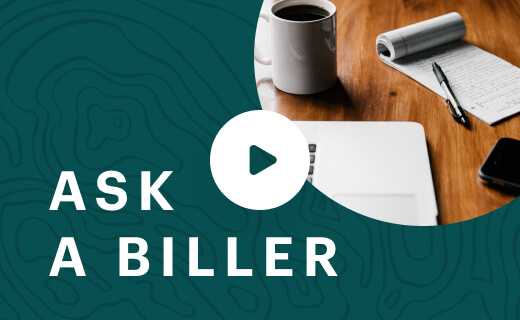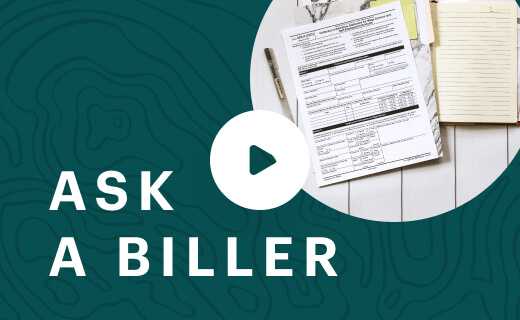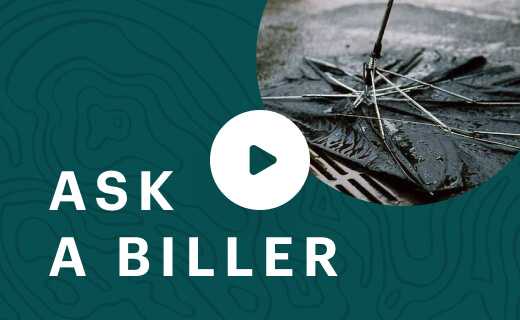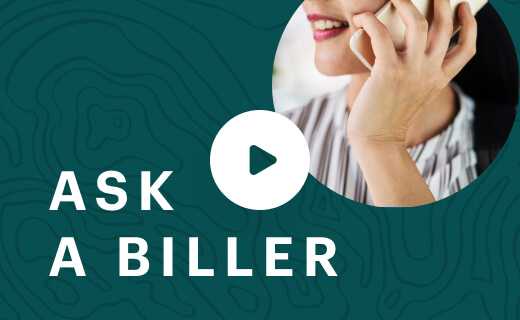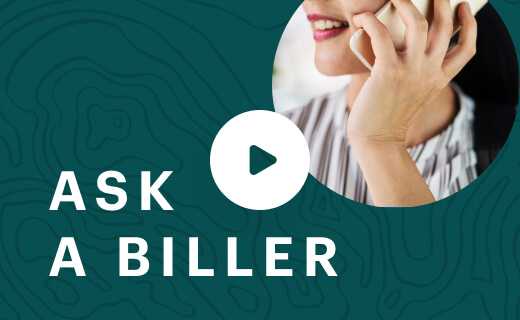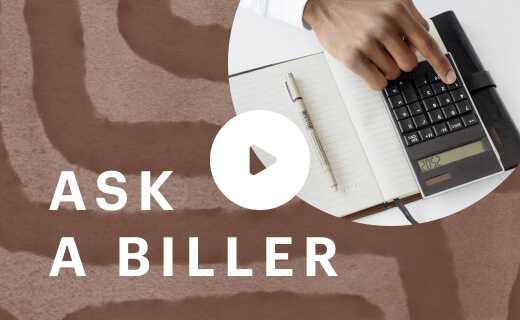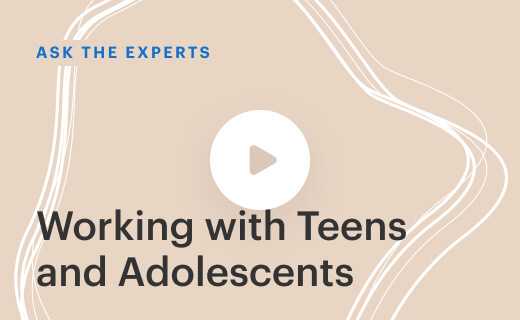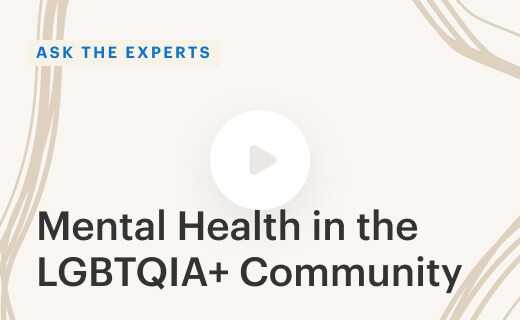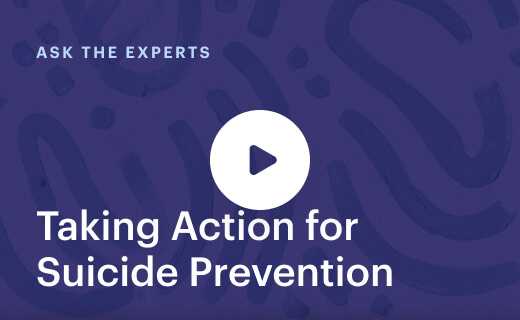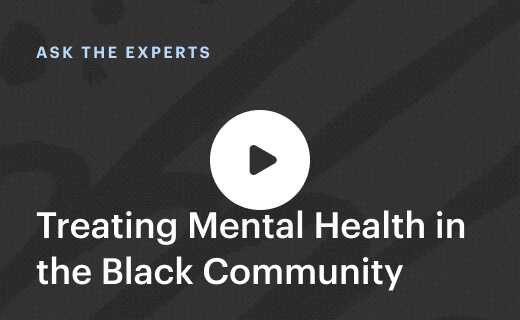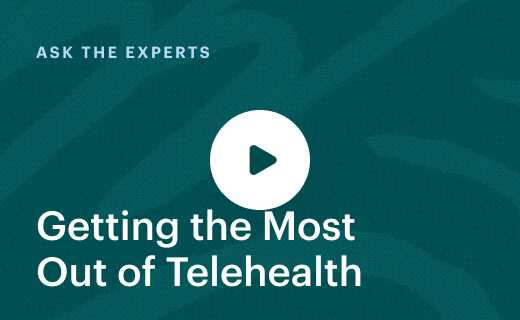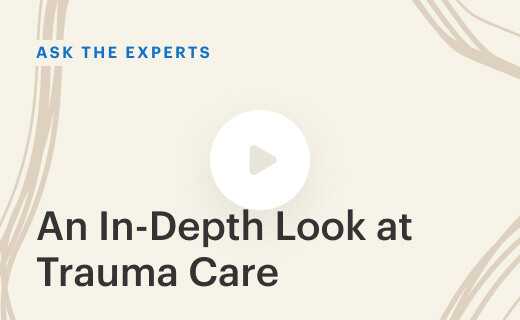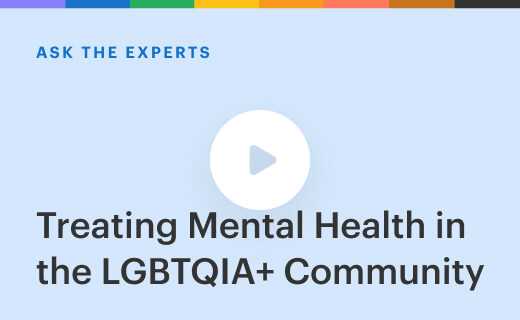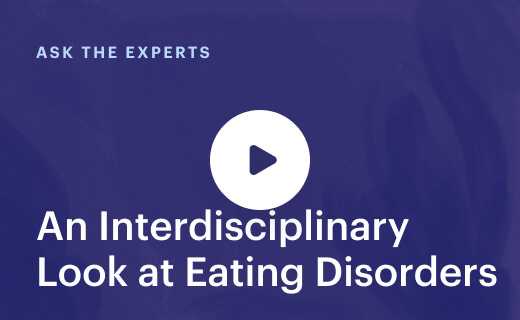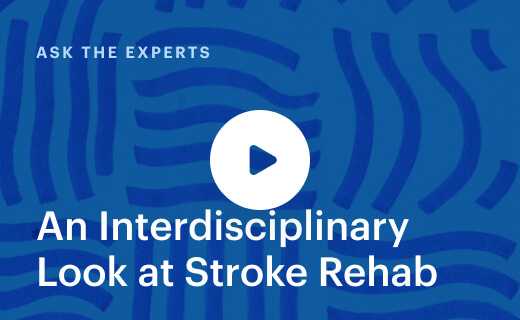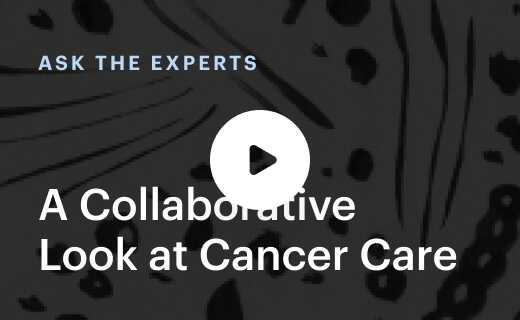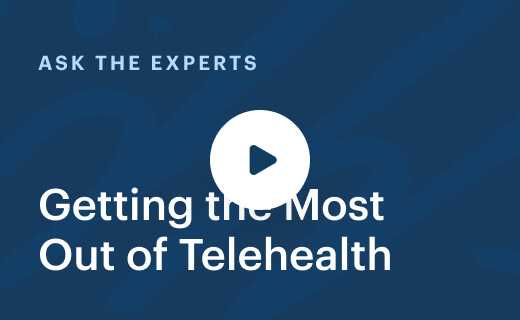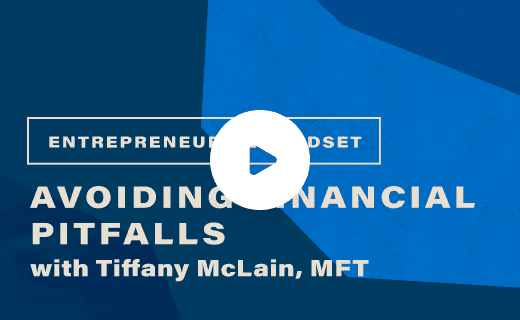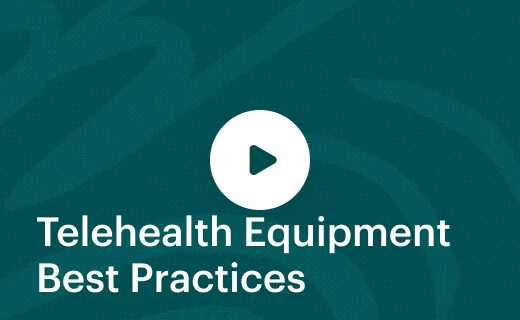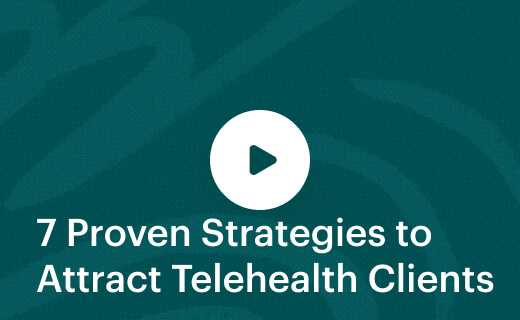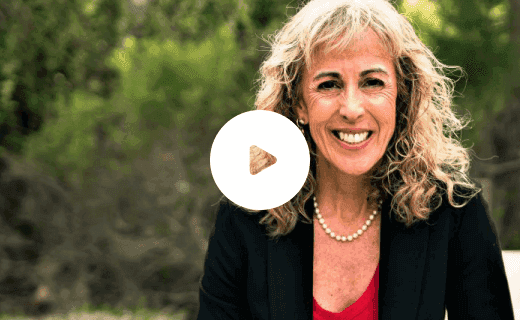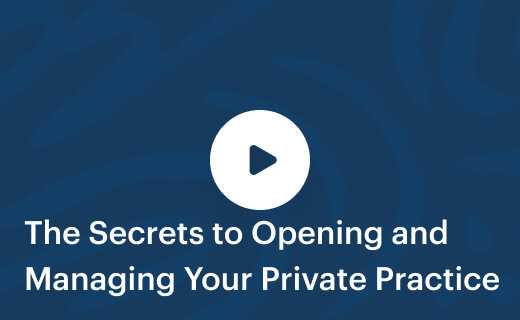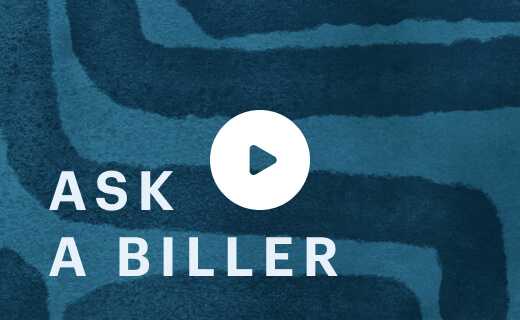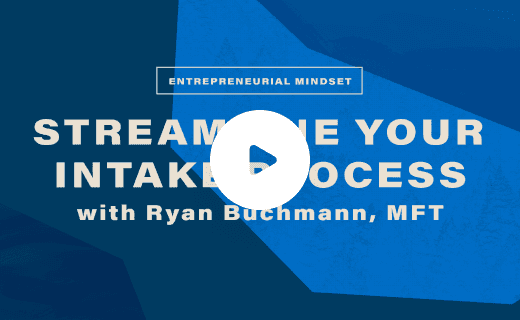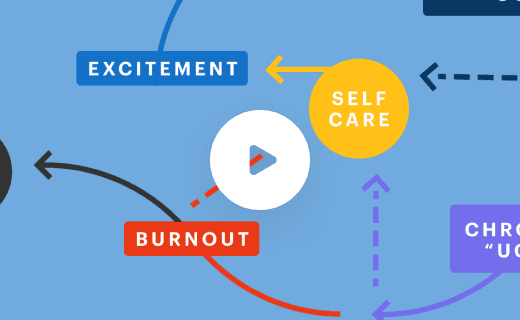Taking Action for Suicide Prevention
Free 30-day trial, access all this & more:
Want to know about other great webinars?
Dr. Ben Caldwell is joined by mental health professionals Jaynay Johnson, LMFT, Dr. Melinda Moore, and Norine VanderHooven, LCSW, to discuss different ways to offer care to clients who may be suicidal, or have suicidal thoughts.
In this webinar, you’ll learn everything about what suicidality looks like in diverse communities, how to work with suicidal clients through telehealth appointments, and best practices in supporting a client on their journey of healing. This panel also offers advice and knowledge about how to work with a client’s parent, who may not consent to emergency treatment for their kid.
If you’ve ever been interested in getting involved with this type of work, these experts offer a holistic and informative approach to taking action with suicide prevention. They also offer encouragement for this line of work and advice on not being too hard on yourself when you might have missed something, or made a mistake.
- Introductions
- How does diversity and cultural challenges affect suicide prevention?
- What are your recommendations for working with suicidal clients through telehealth?
- In working with suicide prevention, how do we as therapists best support the client on their journey of healing?
- How are adolescents and teenagers specifically being affected by the lockdown, by the pandemic?
- How do you address this conversation with children, adolescents, and families where suicidal ideation or suicidality is presenting in sessions?
- What are your opinions on the benefits or drawbacks of a no suicide contract?
- How to navigate a parent not consenting to emergency treatment when seeing a client virtually?
- How do you differentiate attention seeking behaviors as opposed to depressive suicidal ideation?
- How do you assess whether somebody is telling the truth when they are denying suicidality?
- Is there one thing that you want to make sure that everyone here in attendance hears that we haven’t had the chance to cover yet?
1. Introductions
Ben Caldwell: Good afternoon, everyone. Thank you for joining us today for our Ask The Experts panel, Taking Action For Suicide Prevention. This is an hour-long panel. We’ve got some wonderful, wonderful panelists here with us this afternoon. I’m really looking forward to this. And for everyone, I know people are still making their way in, for anyone who wants to make sure that you get a recording of this panel, we will be sending out a recording to all registrants within about a day after this panel is concluded.
I’m Ben Caldwell. I’m your facilitator for today. I’m also a licensed family therapist here in California, and I’ve done some consulting work over the years for the Self Injury Institute here in Los Angeles. So, this topic is near and dear to my heart, and it’s certainly an important one, given that we are in a suicide prevention month and suicide prevention week.
Here’s what we’ll be going through today. We’ll first introduce our speakers. We’ll spend most of the rest of the time answering questions that folks have submitted in advance of today’s webinar. And we’ll use the remaining time at the end for some final thoughts. I’ll give each of our speakers the opportunity to introduce themselves briefly, but I want to tell you about each one as well. Norine Vander Hooven and I have known each other for a little while. Noreen’s a clinical social worker here in Los Angeles, and she does extensive trainings on suicide assessment and prevention. She also runs a private practice. Norine, do you want to say a little more about yourself?
Norine Vander: Yeah, I have actually been a clinical social worker for over 30 years, and the majority of my time was spent working in the community mental health with teens and families. And recently when I switched into private practice and then over to group practice, I started focusing more on more of a spectrum. I’m working more with adults, but the training I do is pertinent to everybody because suicide risk is such an important topic to be able to know. And I also, I’m an EMDR certified therapist, so.
Ben Caldwell: Thank you Norine. I’m really, really happy to have you with us for this.
Our next panelist is Jaynay Johnson, who does a lot of work with adolescents, owns Teen Talk, which is a therapy practice focused on working with folks in the school system. Also, the co-founder of The Black Brain Campaign. Jaynay, could you tell us a little bit more about your work?
Jaynay Johnson: Yes, absolutely. Thank you everyone for tuning in. My name is Jaynay and I work with teenagers and their families mainly to just help teens find ways to be their best emotionally responsible self. And that can take a lot, a little bit of work, but that’s okay, that’s what I am there to help guide them along the journey. But I also work with teens that identify as depressed that also so common are suicidal, just to help them navigate their emotions and help the parents understand the best way to engage in treatment with them, and to just still be very supportive of their journey. So, I do a little bit of that and I also write self-help books for teenagers because all teenagers can’t be in a therapy room, but that doesn’t mean that they don’t need therapeutic supports.
Ben Caldwell: Absolutely. Thank you, Jaynay. It’s a pleasure to have you here with us today as well. Our next panelist is Melinda Moore, a PhD, who’s an associate professor at Eastern Kentucky University. Melinda, first of all, do you prefer Dr. Moore or Melinda?
Melinda Moore: I prefer Melinda. Thank you.
Ben Caldwell: You got it. Melinda, can you tell us a little bit more about your work?
Melinda Moore: Yeah. Well, part of my work at Eastern Kentucky University is I’m part of the core clinical faculty in a new clinical psychology doctoral program, where I developed and then train all of our doctoral students in suicide-focused treatment. The class that I developed is called Understanding Suicide From Assessment to Intervention and Management. And the idea is we’re really trying to shift the paradigm in terms of clinical practice, try to train people while they’re in graduate school. And then I am a CAMS trainer. So I’m a senior consultant for CAMS Care and I expose them to all the major empirically supported approaches, but I train them all in CAMS. And if they so choose after the class, they can then take their training wheels off and actually see suicidal people from our community or on our campus in our clinic. And so that’s really the crux of what I do.
I also work at the intersection of faith and suicide prevention, and then I do bereavement research. I’m primarily suicide bereavement research. I’m primarily interested in a construct called post traumatic growth.
Ben Caldwell: Wonderful. Thank you, Melinda. It’s a real pleasure to have all of our panelists with us today. This is going to be an information-filled hour, so let’s get right to it. We’ll start with our first question, which comes from Latoya, asking how does diversity and cultural challenges affect suicide prevention? Jaynay, why don’t we start with you on this one?
2. How does diversity and cultural challenges affect suicide prevention?
Jaynay Johnson: Yes. So this was a very excellent question and I definitely think given our current climate, we should be having this conversation a lot more and a lot more thoroughly. So my very first point or perspective here is that, the efforts are often not effective because we aren’t considering diversity. We aren’t considering the cultural impacts. We aren’t considering how suicide was not a conversation that was typically held in people of colors’ homes or households for a very long time. It was very stigmatized as something that we don’t do. And so because of that, it’s very hard to even be open about what’s happening, it’s hard to share that those feelings are happening, that they exist. And then if they do, even if that person accepts that, who do I tell? Because I may not have anyone in my family, and my family may not believe in therapy, may not be able to trust my school counselor.
And so there are so many layers to having culturally competent care and being aware of how diversity and cultural differences do impact that conversation. And even when we talk about teens, they often use language that to a lot of adults can see them alarming, but they think it’s funny and it’s their lingo. So really being able to navigate those conversations delicately, and listening more than you speak so that you have an opportunity to understand where that client’s vantage point is coming from culturally and ethnically.
And so with that, the prevention methods and the different prevention strategies may not always work with clients of culture, because most of the prevention methods may not have even included them in the sample of creating that prevention method.
Ben Caldwell: Sorry for the interruption. Maybe this is too big and broad of a question then. And Jaynay, I’ll ask you to answer this first and I’ll ask for other panelists then to add on if they’d like to. But if the usual way might have been taught as standard methods, if those aren’t often effective with clients of color, what do we do instead?
Jaynay Johnson: So I think consultation is a really big piece of this and I was going to add that towards the end, but I think consultation is a very huge part of this. I think being open and aware and not feeling bad that as a therapist you’ve missed something or you don’t know something. We all have blind spots. It’s just, we’re human, none of us know everything, so just being open enough to say, “I have a blind spot here, or I have a bias here. I’m not sure how to work with teens here. I’m uncomfortable with suicide in general here. So how can I really help this student, this child?” And I think it’s by way of consultation, connecting with other suicide prevention folks, people who have worked with clients of that same culture and ethnicity is probably the very first step in understanding how to better navigate suicide prevention methods.
Ben Caldwell: That’s a great point. Melinda, do you want to add on here?
Melinda Moore: Yeah, no, I would completely agree. Consultation I think is critical, but also, maybe if consultation is not available to you or, I work with, I do a dollar training in native American populations, and I’ve really consulted with, I’ve read a lot, I’ve listened to them and there are a lot of unique challenges with native American populations that we just don’t have in other parts of the US. And I think listening and understanding how those might be unique barriers or challenges to getting people to trust you and then also to be able to assess and treat them properly.
Ben Caldwell: Yeah. And Norine, what about you? Anything you want to add on here?
Norine Vander: No, I think the consultation piece is huge. And I know that I will get a lot of clinicians tagging me in Facebook saying, “Oh, don’t consultant with Norine Vander Hooven.” And sometimes I don’t know the answer. And the best thing that I can do is say, “Excuse me, let me consult with so-and-so, whoever it might be within that community. And I will get back to you,” or “let me refer you to someone who does know that or there’s Facebook group who really focuses on that.” And definitely, I think that not shaming people is huge, because people already feel like they don’t know this. And so, but they should know it, but they shouldn’t, it really has never been taught or discussed more recently.
Ben Caldwell: Yeah, it’s a great point in terms of what we’re expected to know. I think a lot of therapists do suicide prevention in the way that they were taught in graduate school, especially if they haven’t done a lot to update their knowledge since then. And there is quite a bit that has changed, just even in the past decade, and I think a significant portion of that has to do with our understanding of what suicidality looks like and what prevention looks like in diverse communities.
Our next question comes from Paula who asks, what is the best way, or what are your recommendations for working with suicidal clients through telehealth? As we’ve all moved to telehealth in the past few months, it is in some ways different from working with somebody who’s there physically with you in the room. Melinda, why don’t we start with you on this one?
3. What are your recommendations for working with suicidal clients through telehealth?
Melinda Moore: Yeah, so this is one that I know well. When the COVID-19 pandemic essentially shut down universities last March, we have a training clinic, like I said, where we see about, at a time about 20 suicidal individuals in our clinic. And so I supervise these cases. These are all graduate students that are delivering this care, face-to-face care. They’ve all been trained in doing face-to-face CAM. Well, when this occurred, we immediately within a week had to increase our electronic platform accounts, and everybody in the clinic, including myself, had to get trained in the procedures in terms of not just the technology, but also doing informed consent, making sure that we had emergency contacts, all of the things that you must do upstream in doing tele-health with suicidal individuals.
I know that there was a lot of controversy, a lot of universities were not interested in doing any suicide-focused treatment via telehealth. And they were doing these check-ins with either suicidal students that were being seen in counseling centers and other clinics. We said, “That’s not good enough.” And so that’s why we immediately moved to doing suicide-focused treatment by this electronic platform. And we were incredibly successful.
These are some of the most distressed fragile people that have been sitting back home, oftentimes from the frying pan into the fire. A lot of the drivers for the suicidality were right at home. But we were able to provide them the care within a short period of time that they really were getting in our clinic. Now, it’s different, and certainly when you’re doing, using a treatment framework like CAMS, you have to adapt it. But the great news is that APA has guidelines readily available. There’s also free through the end of this month training through APA on tele-psychology 101, and then CAMS Care has tele-psychology protocols. So this has already been mapped out for individuals who are thinking about maybe getting training, if they haven’t already, and then providing it through this electronic platform.
Ben Caldwell: That’s great. Thank you. Norine, Jaynay, anything you want to add on this one?
Norine Vander: Yeah, I’ll add now a tag off of what Melinda said is it’s so critical to have that in, not only the informed consent, but the emergency contact, because if, for whatever reason, you get disconnected and can’t reach that person, you want to have that emergency contact to reach out to. But I think the other thing that I’ve been doing with all my clients, but especially my suicidal clients is, having them move back far enough so I can see their whole bodies, so I see their body language. Because let’s say you have a client who gets anxiety and is starting to tap their knee, well, in your office, you can see it, but you can’t see it when they’re on the tele-health, unless they’re moved back far enough. So I try and ask them to do that and be able to really go through and read their body language is so important.
Ben Caldwell: That’s a great point. Jaynay, you want to add anything?
Jaynay Johnson: Yeah, I was just going to say, don’t be afraid to continuously ask. I think sometimes we think, “Oh, I asked once, that’s okay.” It’s like, “No, keep asking. It’s okay.” Check in with them. They’re here because they want the help. They want the assistance. They want to know someone is there on the journey, so just don’t be afraid to ask how they’re feeling and scale them every session, and just really engage with them and ask them if anyone else knows, if anyone else is involved. Because as Melinda and Norine have said, you can’t get that body language, or have that parent bear with you talking about it. So it’s okay to ask the teen how they’re doing, and if anyone else knows how they’re feeling so that you can also keep that contact with the emergency contacts as well.
Ben Caldwell: Yeah, that’s a great point. The research since the COVID pandemic hit seems to show a tremendous, tremendous portion of adolescents and adults, both, but I’ve seen particular research on adolescents, experiencing pretty significant anxiety and depression symptoms. And so, not just asking the one-time, but continuing to ask regularly as the effects are ongoing and they change over time, it seems really important. So thank you all.
Our third question comes from, I hope I’m pronouncing this name correctly, Quirino, asking, in working with suicide prevention, how do we as therapists best support the client on their journey of healing? Norine, I’ll start with you here.
4. In working with suicide prevention, how do we as therapists best support the client on their journey of healing?
Norine Vander: Yeah, I think the number one important thing is, again, I said this before, don’t shame the therapist for not knowing, and especially moving into telehealth, therapists are having a hard enough time just adjusting to that. So really be supportive to them, be able to give them support in how do you ask, how do you support, what’s the ongoing process? And I think like Jaynay said is, let the therapists know it’s okay to ask in every session, because just because you asked once doesn’t mean that tomorrow they’re not going to be more depressed or anxious and then develop some type of suicidality. So I think really supporting the therapist as well as supporting the client.
Ben Caldwell: Yeah, thank you. Jaynay and Melinda, I’m curious to get your perspectives here and I’m thinking, I know we’ll talk a little bit more about the lockdown and the pandemic here as we go, but as we’ve seen this, the pandemic go on and the impact of it in terms of the shutdown of schools and businesses, et cetera, go on for months now, we can do really wonderful work, and every day therapists are doing tremendous, tremendous work, supporting clients in need, clients who are actively suicidal or close to it, but we can’t control some of these societal pressures, some of the events that are occurring around us. And so I’m wondering, from your perspectives, how do we best offer support to clients who are in these really, really difficult circumstances, knowing that some of those circumstances just are beyond their control?
Melinda Moore: This is, I think, this is a classic question, right? If we can’t respond, if we can’t control the situation, then what we can do is, how we respond to it, kind of Viktor Frankl raises this question about the Holocaust, right?
So, encouraging, instilling hope, installation of hope is really critical. I think helping them be flexible in their thinking, getting a problem solving mode. So, I think a great deal are the individuals in the hospitality industry, for those who are really getting hit hard economically. And of course, we know a lot about now, thanks to the recession of 2008, in the connection between, the relationship between economic recession and suicide rates. And so that’s of great concern. We don’t know what’s going to happen because we won’t have the data for a couple of years, but there’s certainly a concern around that.
So I’m more concerned about these economic impacts than I am so much about isolation. However, we do know that isolation is really difficult for individuals. I think we’re all probably struggling with that, the lack of face-to-face or the in-person connection. But I think people can also get into a problem solving mode with that as well, in terms of using technology or, safely doing things with other people, outdoors, that kind of thing. So I think it’s a matter of instilling hope and then also getting into this flexible problem solving mode with individuals.
Ben Caldwell: Okay. That makes a lot of sense. Jaynay, go ahead.
Jaynay Johnson: I think I’m going to just tell all of the therapists out there to also be on your own journey of healing. We are also being impacted by this pandemic, and so it’s okay to not take on more clients just because the need is higher. It’s okay to take a break, personal days. Model the same behavior that you would encourage your clients to use so that you can keep yourself centered and as full as possible for all of your clients. So for me, that’s a way for us to best support our clients on their healing journey, is to make sure we aren’t neglecting ourselves. As we all know, burnout is real pre-COVID. And I imagine you’re going to see some more data that it became even more severe, so take care of yourself.
Norine Vander: So the one thing I want to add is, great advice Jaynay, that I’m actually starting some groups online for therapists just for that reason, because I see it all the time. I have several clients that are therapists, and so this is happening, that they’re not taking care of themselves.
But I think also with the clients, remind them, like some of my clients experienced the Woolsey Fire a couple of years ago, and other fires a little farther away, and have lost tremendously, and now the fires are starting again. And really to remind them that they got through that, and ask them, “How did they get through that?” So to bring them then back to today to know that they will get through this as well, and relate that to the pandemic in that same way.
Ben Caldwell: That makes a lot of sense. Jaynay, if you don’t mind, I want to come back to you because I know a good portion of your work has focused on working with black clients. And when we’re talking about circumstances that are beyond the individual’s control, we’re seeing an incredible movement toward racial justice, but it’s also being been spurred on by the continued harming and killing of unarmed black people. And I’m curious about, specifically, if you have a black client who is feeling this as a contributing factor, in their sense of hopelessness, how do you address that clinically?
Jaynay Johnson: So, I acknowledge it because it’s the truth. I don’t try to instill too much hope just because, in our culture, it’s been happening for years. So the idea of hope does not feel as tangible as, “Okay, this is our reality.” So, in those cases, I am very much just acknowledging that it is real, that it’s very possible a teenager could be driving with their friends and get pulled over and it could be fatal. I acknowledge that that is real because our reality has shown that that is real, that there aren’t opportunities to just be a kid. As a black teen boy, you can be seen as a man, even if you’re a teenager. So for me, I try not to instill too much hope around the reality, but I may try to instill hope around teens having a very unique voice.
The gen Zs are very open to social justice and reform and not just doing what the government and people tell them to do, even their parents, which is why they usually come to me, because they’re not listening to their parents much. And so I do use that as hope, and I tell them that they do have the power to change the world, but I don’t overly instill hope around the very traumatic experiences that they have just being black. So it’s a parallel process for me with how I use hope and then how I use reality, to just merge so that they can feel hopeful about what they decide they want to feel hopeful about.
Ben Caldwell: That’s great. Thank you. That’s really helpful. Our next question comes from Orlan, who asks, how are adolescents and teenagers specifically being affected by the lockdown, by the pandemic? Norine, why don’t I start with you on this one?
5. How are adolescents and teenagers specifically being affected by the lockdown, by the pandemic?
Norine Vander: Unfortunately because all of their schools are shut down, they’re not allowed to socialize outside of that, and that’s such a big thing, and so they feel so isolated just in that. Their social circles, all their extracurricular activities that they do, they’re unable to do that. And so I think it’s really just like what Jaynay said is, it’s hard to instill hope in that one as the reality is that’s what’s happening, but provide support and provide them other ways to get around. I talk to them about some social distancing stuff and building groups within themselves for that. There are a bunch of different apps that are able to do that. And so that has been helpful to some of the teens that I work with.
Jaynay Johnson: Yeah, I would agree. So I think one of the other things that I find teenagers and what their struggles are is, as Norine said, their social climate is the best thing for them, and they’re so connected, and it’s what actually helps shape their identity. And for so many teens, they realize, “Oh, I actually don’t have a place within my family,” because naturally developmentally, they are trying to find their, finding that autonomy and securing their identity. So I think that it’s very difficult for them.
But to Norine’s point, I do also encourage them to navigate and explore some of their interests. So things that they may have noticed they put down. YouTube has a lot of information, and so I say, “Hey, it’s okay. Go down to YouTube black hole, but make it a productive one. Look at fashion things, look at beauty things, things that you’re interested in and learn more about it.” So those are some suggestions that I give teens to help them stay connected to an interest and help them explore and build on that while they are home. But it is hard. They’re just naturally struggling because those social connections are really important and what really solidify their identity, and being home with their parents has also been a very huge, huge stressor obviously, but the parents do.
Ben Caldwell: Yeah, I know a lot of parents who’ve really struggled with, they’re trying to maintain a full-time job that they’re maybe now doing via telecommuting and also being a full-time school teacher now, in addition, so it’s tremendous strain on a lot of families. Is there any adequate substitute for the in-person socialization that kids would be getting at school?
Jaynay Johnson: One thing I have seen a lot of my clients do, I’ve had parents who have communicated with other parents around testing and making sure that they’re safe. And so kids are still rotating with visiting friends because the families have agreed to be safe and to be on the same page. And so I have seen that be very successful with some of my youth, where the parents and the client, everyone’s agreeing, “Okay, these three kids, we know they’re safe, they can come here. We’re all practicing quarantine in our way, but still connecting.” So that is an option if families feel secure enough, feel safe enough, get test results and know that people are being safe, but that they’re going to quarantine between two homes, then that could be a pretty good option for families, if that’s a possibility.
Ben Caldwell: And this idea of social pods, maybe a couple or a few families who are not interacting as much with the outside world, but are interacting a lot with each other.
Ben Caldwell: Norine and Melinda, do you want to add to that?
Melinda Moore: Yeah. Well, I will tell you. Our first year clinical psychology doc class, they’re doing that. So we got a cohort of 12, and several of them came from other parts of the country, and the students who were more local realized that it would be incredibly isolating for them because they have family here, but the other students did not have family here. They just decided to quarantine as a family, this entire cohort. And that’s exactly what they’re doing. And I think it’s really, it’s a beautiful thing that they’ve been able to create the cohesion. And they’re going to be able to carry that through this whole program. And it’s just beautiful to watch.
Norine Vander: Yeah, I was going to say when we’re talking about teenagers also, we’re talking about young adults, like Melinda’s talking about and in college. And some of these college kids are home, and that makes it very difficult. So I know like my youngest has been home. She just went back to Oregon, but she was home. And the same thing is we quarantine, we talk to her boyfriend’s parents, and there were a couple other parents that agreed to do that so that they can be able to socialize and get some of that normal interaction that they would outside of this.
Ben Caldwell: There was a headline, I think in the past couple of days, saying that this year in 2020, a greater proportion of people in their 20s actually returned home to live with their parents than we had seen in the US since the great depression. That’s really remarkable data about how people are trying to adapt in various ways.
Ben Caldwell: Our next question comes from Anna, who asks, how do you address this conversation with children, adolescents, and families where suicidal ideation or suicidality is presenting in sessions? So yeah, if this, actually, if it comes up in session with parents present, that’s certainly a common and understandable thing for the parents to freak out. How do you address this with them? And Melinda, we’ll start with you.
6. How do you address this conversation with children, adolescents, and families where suicidal ideation or suicidality is presenting in sessions?
Melinda Moore: Yeah, so this actually happens quite a bit with us. And in our clinic, we will oftentimes have children coming in for learning disability assessments. We used to do a ton of therapy and a ton of assessment, or other kinds of assessments. And smack dab in the middle of the assessment, it’s very apparent they’re very suicidal. And so we immediately stop and then do an initial session of CAMS.
But we oftentimes, definitely include the parents or the guardians. And we make an assessment pretty early on. And I train all my students to do this. Is the parent, are they an enemy? Are they an ally? How much do we let them in? And we just only want them to be a part of their stabilization plan or their safety plan or whatever you call it in your location. We want to bring them in as much as possible because we find that having parents or guardians or other family members as a part of, whether it’s the treatment plan or the stabilization plan, is really helpful to them. And really it’s good for, I think the child or the adolescent to feel that kind of support from their family guardian and their family members.
Ben Caldwell: By the way, I don’t want to let the hour go by without this, you’ve mentioned CAMS a few times. I think a lot of providers are familiar, but for those who are not, can you give sort of the 30 second rundown of CAMS?
Melinda Moore: Yeah. There are three empirically supported approaches to treating suicidal individuals. The first one is cognitive behavioral therapy for suicide prevention. The second is dialectical behavior therapy. And then the third, latest one, is the collaborative assessment and management of suicidality, which is really, a suicide treatment framework. So it’s non-denominational, you can come at it using this framework, it’s assessment heavy, the suicide status form is embedded in each of the sessions. And so it’s really driven by the assessment, the treatment plan is driven by the assessment. We’re focusing on what’s driving the suicidality, helping the individual not just cope differently with the stabilization plan, but also really addressing those drivers of suicidality. Because without that, you never really resolve anything.
Ben Caldwell: I get the impression you may have given that speech once or twice before.
Melinda Moore: Yeah, in my sleep.
Ben Caldwell: Jaynay, did you want to add onto this question? How do you address this when you’re working with a child or an adolescent client and their parents as well, and this comes up in session?
Jaynay Johnson: I make sure that I am very mild-mannered about it. I make sure that I am even, that I keep my tone very calm, because everyone’s usually paying attention. The teen wants to know, are you going to freak out? The parent is watching to see if you’re going to freak out. So I’m very even keeled just to make sure that I can maintain what’s happening in the session and what comes out. And then I just move backwards in terms of asking, has this come out before? What kind of supports have ever been used before that? And then if I need to, I will, again, like what Melinda said, decide based on how the parent responds in that session, what needs to happen next.
If I need to just have a parent-only session to hear their fears, because the reality is most parents are just scared. When they hear something like that, they think they did something wrong, they think they missed a lot of cues, and they may have, and then they may have not. I tell everyone, if you want to figure out how to get something done or go around it, you ask a teenager, they can tell you how to innovate this, do this quickly, do it shortly. So I try to really, also give parents an opportunity to express what they have going on, because to Melinda’s point, you want them a part of the plan in stabilizing. You don’t want them to constantly be the trigger, you want to learn if they are the trigger, you want to just learn a lot more information. So at times I will just keep myself pretty even, ask more additional questions about background, and then I will plan for separate sessions after that to continue assessment.
Ben Caldwell: So my wife is also an MFT and she runs the Self Injury Institute here in LA. And one of the best things I ever learned from her about working with suicide was, she said in a training one time, “We have to be able to say the word suicide with the same intonation that we use when we say the word hamburger.”
Jaynay Johnson: Absolutely.
Ben Caldwell: It has to be just that matter of fact that, that’s part of our sort of day-to-day work as therapists. And it’s so important in communicating with clients, with parents, with anybody else that we can handle this, that if there is a safe place in the world to talk about feeling suicidal, it’s in a therapist office, that we’re not going to freak out. We know what we’re doing. We’re able to have that conversation, and that the client doesn’t need to take care of us by minimizing whatever they’re feeling or taking other steps to comfort the therapist. Norine, did you want to add on here?
Norine Vander: Yeah, the first thing I want to address is your point is, that’s one of the things I have in my trainings. And when I do live trainings, I break the people up into groups of two, and I have them ask each other, because some people are terrified to ask. So you just want to get them comfortable to be able to ask that, or ask the question of something like, “Have you thought of killing yourself before?” Because sometimes when you ask suicide they will go, “No,” but if you ask differently, they might.
And I think the other thing to address to Jaynay and Melinda’s points are that really when I’m meeting with a teen individually sometimes, and they’ll express suicidal thoughts and intent or plan, and we’ll talk about having to talk to their parents, they will freak out. And I’ll ask them, what it is that’s so concerning to them? Most of the time they will feel their parents will be angry. And so we will have a conversation about how we’ll talk about it and how they’re not angry. They’re just worried and they want to know best how to help you. And then I will also ask them if I can talk to their parents alone. And I will talk to the parents individually. And sometimes the parents do present as really angry. And if you give them, you just sit with them, and just be with them a couple of moments, they will usually start crying. And then really be able to provide that support and help them connect to their teen and express their worry versus any anger. Because it’s not anger, they just don’t know how to express this.
Jaynay Johnson: Absolutely.
Norine Vander: Maybe some of them have never heard it before.
Ben Caldwell: Yeah. Melinda, I think this next one’s going to come to you. And I suspect we all are going to share a response here, but Shannon asks, what are your opinions on the benefits or drawbacks of a no suicide contract?
7. What are your opinions on the benefits or drawbacks of a no suicide contract?
Melinda Moore: Yeah. No suicide contracts, I’m almost shocked that we’re being asked this question, but Shannon, thank you for the question, because unfortunately no suicide contract still exists. When I first came to Eastern Kentucky University, they were in our clinics file and I immediately told the clinic coordinator, get those out and shred them, because we don’t need no suicide contracts. The reason we don’t is, well, they may make us feel better, we’re somehow doing something about a really scary situation, it’s really about our feelings. And no suicide contracts not only do they not hold up in court, so they’re not effective, but they also create a power struggle between you and your client. And the bottom line is, people are going to act and do in their own best interest, so it’s really not worth it, they’re not effective, and frankly, that’s not the kind of groundwork you want to lay in terms of creating that alliance with the person you’re working with.
Ben Caldwell: I imagine that we all agree on that, but Jaynay and Norine, anything you wanted to add?
Norine Vander: I think the one thing that doesn’t resonate with me in that every time I always let them know is, that if you’re using no suicide contract, first of all, again, you’re asking them to sign something that’s not valid, but it’s also not collaborative. And so you want, this to be a collaborative process and let the client know that you were supporting them. And when you’re asking for them to sign this contract, that you’re telling them, “You’re not going to do this,” or “You’re not going to do that.” That’s not very supportive and it’s certainly not going to give them the feeling of, they want to be able to be open with you and really share their true thoughts and feelings so that you can be helpful to them.
Jaynay Johnson: Yeah, I agree. I think that they’re pretty dismissive to what the client is sharing is going on with them. And it’s like, “Oh, so all you want to do is just have me sign a contract? Well, I still feel this way, so now what?” The paper isn’t, they’re going to erase it. So I do think it’s very dismissive and I think it’s more important to listen and to build a relationship and continuously do that throughout treatment. I am a big fan of always building rapport. Never think you’ve built enough. You should always be building that rapport. And so I really don’t think there are any benefits to it and plenty of drawbacks. So that might be a clue to anyone out there listening, that it may not be as helpful.
Ben Caldwell: So Melinda, you were saying that they are still out there. Certainly, when I was in graduate school, I was taught to do no suicide contracts. And this was late 90s, early odds. And I remember a few years later, an attorney I was talking with saying basically that not only are they not like a contract in any kind of legally enforceable sense, but imagine what this would mean if you ever wind up in court on a case that’s related to potential malpractice around a client suicide.
If the judge is looking at the sequence of events, and you were able to identify enough risk that you went forward with a no suicide contract, but that’s all you did, you’re sort of saying, “I know there’s risk here, but I really just want to take you at your word that you’re not going to hurt yourself between now and some certain length of time in the future.” And the attorney was telling me they couldn’t imagine any court in the land finding that to be an adequate step. So what we do now instead is some pretty detailed safety planning. I know we’ve got some other questions related to that topic here as we go.
Our next question comes from Christina, how to navigate a parent not consenting to emergency treatment when seeing a client virtually. And then I think the virtual part is an important component here, but this comes up within person care as well. You might be seeing a client, an adolescent or a child in person. You might come to the decision that this person needs emergency care. And you might have a parent saying, “No, I’m not interested in doing that.” Melinda, I’ll start with you, and then Jaynay and then Norine.
8. How to navigate a parent not consenting to emergency treatment when seeing a client virtually?
Melinda Moore: So we have a real simple answer to that, and that is, you consider that neglect. And so we give the parent a choice. Suicide is a psychiatric emergency, and it would be preventing them from, if they were in a car accident and they were bleeding out, being seen by a doctor, it would be considered neglect and then we would have to make a report. That’s how we handle it typically. But I’m curious to know how Norine and Jaynay would handle that.
Jaynay Johnson: Okay, so mine is, that is the next step. So my very first step is to have adult-only session, emergency call if it’s an emergency, virtual, because I need to know what is going on. I do need to know what is stopping you. Did you have a traumatic experience before? What is going on? That for me is a little bit more, well, I like to take that step because I want the therapeutic relationship to continue.
I do not like the therapeutic relationship at times to be disconnected by something like that, because then when that teen has to leave treatment, I don’t want them to have to start a new therapeutic relationship because of maybe I didn’t give enough time initially to explore what was happening with the parent. So I do try to take more time initially to just ask the parent what are you feeling? What are your fears? What do you perceive as your barriers? What do you think is going to happen? So that I can hopefully walk them through and help them process that in a quick sense, so that we can move forward in terms of, to entity what I can do to help alleviate some of those barriers so that we can actually get that teen to emergency care. If that parent still denies after all of that, then yes, it is considered medical neglect. I will make all kinds of reports.
And I usually tell the parent that I am doing that because again, I do like to be transparent and upfront and tell them exactly why. And then usually that still allows them to feel comfortable enough to return to treatment. But I do try to take an extra initial step to explore the fears and explore the barriers and try to provide some time in the process, and try to provide some opportunity to pull resources or support and still get that teen into that emergency care.
Norine Vander: So I do a combination of both because I think both are important. But I think the first thing that’s key to me is yes, I want to speak with the parent. And like I said before, a lot of times parents will appear angry, but they’re really afraid. And so like Jaynay said is really trying to process that. But the important thing is, you have this client that’s so at risk, you need to make sure while you’re talking with that parent individually, that someone’s with them. Do they have a sibling there? Do they have a friend there? Do they have their other parent there that they can just sit with for the time being? And if not, be able to get somebody so that they’re not alone while you’re talking with the parent individually, because that’s just so much to leave them by themselves when they’re expressing something that they need that emergency psychiatric assessment or response.
And yes, I do, and then if the parents will say, “Well, in the end, still, I’m just saying no,” not only will I make report, but in our county we have what are called crisis intervention trained officers. And so I will call and I will let the parent know that I am having a crisis intervention trained officer sent to their home so that their child, their teen, can get that service. And then usually when they come back, they are thankful that that happened. They may be angry, but they’re still thankful.
Jaynay Johnson: I was just going to say, I wanted to add a part of that on, I want us to be mindful that sometimes parents are saying no too, because their teen may be aggressive and not want to get in the car to go to treatment and different things, and so if your county or your area does have a mobile crisis team or crisis intervention, use it. Call them so that they can go to the home because more than likely the parent is open to someone coming to the home to assess and to provide support versus trying to get their teen involved. And again, in our black community, you maybe not wanting to call the police, because in our community, you have to call the police sometimes to get the child to want to go, and you don’t want to do that.
So those two worlds end up colliding there frequently. So you do want to really assess what resources you have in your area. And if there is a mobile crisis team available, utilizing them to support and get that assistance to the home versus having to use a method that unfortunately can be fatal for some families. And we have seen police kill people and attack workers when there are mental health crisis. So it’s not something we can ignore. So you just want to be mindful as you’re assessing and deciding next steps.
Ben Caldwell: So I’m curious, and I think I might know the answer to this question, but I’m curious about your thoughts. We were just talking about safety planning and how that should be a collaborative process and a no suicide contract is maybe more coercive in nature. How is this different, if we’re saying, well, if you don’t want to take your child to emergency care for a psychiatric emergency, it sounds like we’re in agreement that there would be some effort to talk with the parents first, but then ultimately that child has to go, has to go get an appropriate assessment at an emergency room or another appropriate facility? It sounds like the threat of a neglect report for example, would also be pretty coercive. So what’s the difference? And Melinda, I’ll start with you.
Melinda Moore: Yeah, start with me because I was the one that, that idea sort of … It’s okay. I’m not saying that we don’t explore with the parent what they’re feeling or thinking, because I completely agree with Norine and Jaynay. It is usually fear. And we’ve had two five-year-olds in our clinic. One of them made an attempt when he was four, and it was almost unimaginable to, in one case the parent and the other case, the guardians that these children would be suicidal and be so young. So I think it’s important to really explore that.
But I also think we have to pick our battles, and I don’t think it’s inconsistent with the collaborative philosophy to say, “Well, this is my duty. I am mandated to keep this individual, you or your child safe and there are boundaries here.” And I think what we’re doing is we’re just being clear and candid about it. And usually when you say to a parent, this would be perceived by me as neglect, that’s usually all you have to say. But I do think it’s a matter of picking your battles and being, but it’s part of also the philosophy of being clear and candid about boundaries and legal mandates.
Ben Caldwell: That makes a lot of sense. In the interest of time, I want to make sure we get a couple of other questions here answered. So there are a couple of questions I want to have each of our panelists answer, but I’m going to ask you to keep your answers pretty brief if you’re able. We talked a little bit about that already. I was curious about this one. How do you differentiate attention seeking behaviors as opposed to depressive suicidal ideation? This is a question from Landy. I’ll start with Norine, then we’ll go to Melinda and Jaynay.
9. How do you differentiate attention seeking behaviors as opposed to depressive suicidal ideation?
Norine Vander: Well, before I was in private practice and in a group practice, for about five years, I supervised a mobile crisis response team for zero to 17. And the youngest we had was three. So what I let the parents, because the parents will often say, “Well, this is attention seeking behavior.” And if that just [inaudible 00:47:57] no extent, because obviously, they are trying to get some message across. It doesn’t matter if they truly have suicidal ideation or they don’t, and this is attention seeking. It’s like, what are they not getting to need to express themselves in this matter?
So I talk with the parents always about whatever it is, always take it seriously and explore it and ask and get a professional involved if there’s not one involved already, to be able to assist in that. Maybe there’s something that the teen or the child isn’t wanting to let the parent know, or maybe get another parent who the child is close with. I have a lot of teens who have second moms. And so I’ll often get that person involved and we’ll be able to work on it that way, but it should never be taken as attention seeking.
Melinda Moore: Yeah, and when I train my doc students, I tell them to remove the word manipulation or manipulative out of their vocabulary. We don’t conceive it that way. Suicide serves a function, and people use the tools that they have. And I like to conceptualize it as connection seeking. And so we penetrate our compassion with maybe the lack of tools that, that individual, whether it’s a child, adolescent or an adult has, and we just, we don’t conceptualize it as attention seeking, just recognizing it’s a skill deficit.
Jaynay Johnson: Yeah, same. Teens need attention. Humans need attention. We will from birth until death. So I do think we have to stop framing it as a negative thing. It is not negative to want connection and to have a sense of belonging. So there is no way to differentiate it. It just is there. They have a need, and the behaviors are functions, and so just get to the root of it.
Ben Caldwell: That makes a lot of sense. Okay. Let me go to this one from looks like Malerie, is there a specific question to ask a majorly depressed client denying suicidal ideation or plans, to assess their truthfulness? I might read this as, if you have a clinical impression of somebody that suggests they may be meaningfully suicidal, but they are denying it. There’s been some recent research to suggest that a decent proportion of folks who are actively suicidal will actually not tell you that when asked directly. So how do you assess whether somebody is telling the truth when they are denying suicidality? Jaynay, I’ll start with you on this one, and then Norine and Melinda.
10. How do you assess whether somebody is telling the truth when they are denying suicidality?
Jaynay Johnson: You can’t, in short, you can’t. You have to take that client’s word for what they say they’re feeling and what they’re believing, even if they may be suicidal, they have self-determination to not share that. I think, again, the idea of truthfulness is based in our own fear that they might do something, and they were in our office, and we didn’t know. So you have to get comfortable with knowing that a client may complete it and you did not know, and they were in your office, and you asked the questions, and they didn’t tell you, because we just never know. And there’s nothing we can do. Not nothing, but if a client isn’t being honest about it, or even sharing that, we have to just take what they say at their face value as their truth and not try to be detectives.
I do think, again, to my point earlier, you continue to ask, so you may want to make sure that you’re checking in each session. You may want to look at some of their behaviors and ask some questions about that. But the reality is, they may not share how they actually feel. And that is scary, but it is also a reality.
Ben Caldwell: Norine, in 30 seconds or less anything you would add to that?
Norine Vander: Yeah, so what I often do, Stacey Freedenthal, who is out of University of Denver, she wrote a book called Helping the Suicidal Person, amazing book. If no one has ever used it, please, please, please purchase it and use it. And one of the things she talks about is, if you’ve asked directly and they go, “No,” then maybe ask, go to some other things, come back and then you can also ask them. So when was the last time, maybe don’t ask them so directly. And then they will tell you, “Oh, today I thought, blah, blah, blah.” Or how many times have you attempted to kill yourself or had thoughts or plans, whatever it is. But go to something else to make them feel a little more comfortable again, and then maybe ask in a way that you’re going to get that going through the back door. You’re going to still get that question.
And I think like Jaynay said, sometimes there are people who are just not going to share this and you just have to be comfortable with that as well.
Melinda Moore: I have nothing to add to either one of those. I think those are great responses. I would also encourage everybody, if you don’t have Stacey Freedenthal’s book, please buy it because I think she gives some phenomenal advice and it’s very readable.
Ben Caldwell: Yeah. Well, thank you all very much. I really appreciate everybody’s contributions here today. Jaynay, Melinda, Norine, I really, really appreciate your taking the time. Everybody in attendance, I appreciate your taking the time today as well. Certainly there is no more important topic in the work that we do then making sure that we are keeping vulnerable clients safe.
Ben Caldwell: So a couple of things here quickly before we go, first of all, at SimplePractice Learning, we do have a six-hour on demand course on suicide prevention, assessment and intervention that meets California’s new one-time requirement for such training. It’s at simplepracticelearning.com. And then for our panelists, I know that we didn’t get to talk about everything today. It’s tough to fit everything that we might want to talk about on this topic into an hour, but in 15 or 30 seconds, is there one thing that you want to make sure that everyone here in attendance hears that we haven’t had the chance to cover yet? We’ll go Melinda, Norine and Jaynay.
11. Is there one thing that you want to make sure that everyone here in attendance hears that we haven’t had the chance to cover yet?
Melinda Moore: So today on World Suicide Prevention Day, I think when we think about the burden of suicide, it’s not just the 48,000 Americans who are dying every day, but it’s those individuals who are exposed and impacted. We know that there are 135 people who are exposed at every person who dies by suicide. And of those, about 48 individuals feel close or very close and are impacted significantly to the point that they would actually have higher levels of depression, anxiety, and suicidal ideation themselves. So when we think about the burden of suicide, it’s not just those who die, it’s those who are impacted and feel close, but oftentimes are neglected, I think, by the mental health world. And we need to do a better job of querying about that.
Norine Vander: I totally agree. And I also want to add to that, that sometimes all it takes is asking someone, are you okay? Or checking in with people who you think seem fine that may not be fine. And also let people know, especially, like Melinda was saying today is suicide prevention day that it’s okay not to be okay, that not everybody is okay 100% of the time. And that’s really okay. And to please, there is always someone to reach out for help.
Jaynay Johnson: And so as the suicide rate is increasing for teenagers, in black teenagers specifically, I think it’s really important just to listen more than you speak and just really hear how they’re feeling instead of imposing your thoughts and imposing what you think they should be doing, but allow them to share with you what they think they should be doing.
Ben Caldwell: Thank you again, to all of our panelists, to everyone here in attendance today, Jaynay, Melinda, and Norine, really, really valuable knowledge. I’m so grateful for your time and expertise in sharing that with our folks. From all of us here at SimplePractice, again, my name is Ben Caldwell, have a wonderful afternoon, and we’ll see you again soon.
Build the best practice you can.
Our resources to help you & your practice take the next step.


